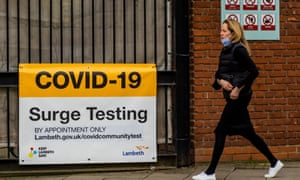At the end of last year, a crack team of British scientists discovered a new coronavirus variant that would spread across the world. The Guardian’s health editor, Sarah Boseley, tells Rachel Humphreys about how the scientists went about tracing the variant.
The UK is world-leading in its genomic sequencing and surveillance. When the coronavirus first reached the UK, genomic scientists began a major collaborative effort to sequence samples from people who had fallen ill. The Covid-19 Genomics UK (Cog-UK) consortium included the four public health agencies, the Wellcome Sanger Institute and more than a dozen universities. All viruses evolve and change over time; a virus with one or two mutations is called a variant. Genome sequencing aims to track those changes, which most of the time are insignificant. By late December, the UK was responsible for about half of all the world’s genome sequencing of the coronavirus.
The arrival of the Kent variant was very bad news for the UK, and for the rest of the world. But even as borders slammed shut, the UK’s pioneering genome scientists were lauded for having found it. If there was any remaining doubt about the importance of genome sequencing in a pandemic, it had been laid to rest. When the UK has fewer Covid cases, a bigger proportion can be sequenced – and there is a greater chance that variants will be detected earlier. As global travel increases, and lockdowns ease, that work will be more important than ever.

Photograph: Guy Bell/REX/Shutterstock
Support The Guardian
The Guardian is editorially independent.
And we want to keep our journalism open and accessible to all.
But we increasingly need our readers to fund our work.
This content first appear on the guardian
